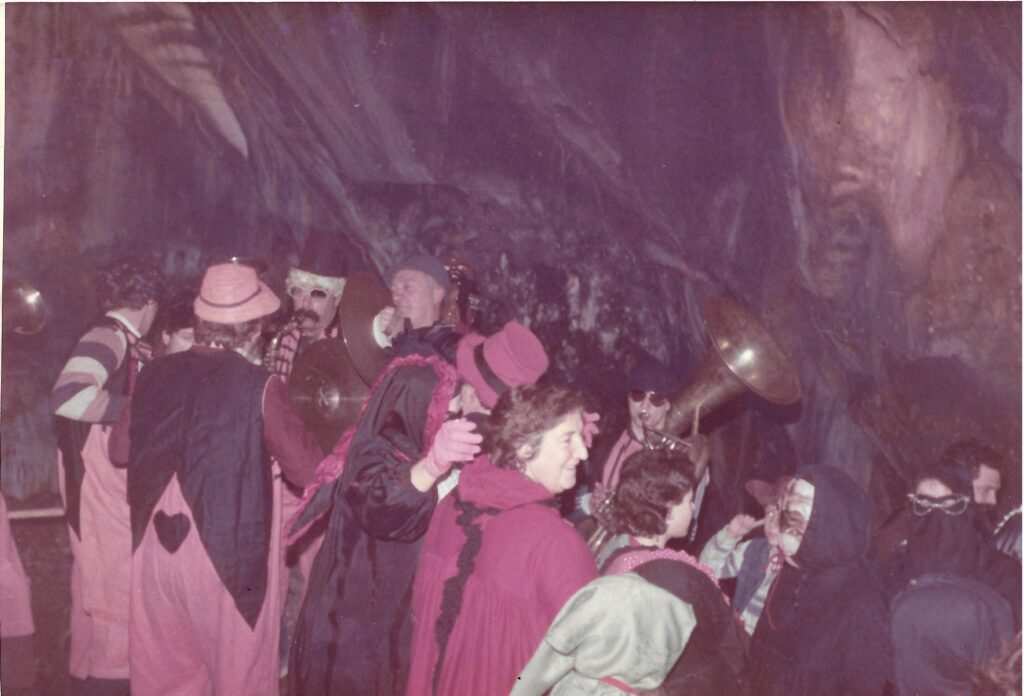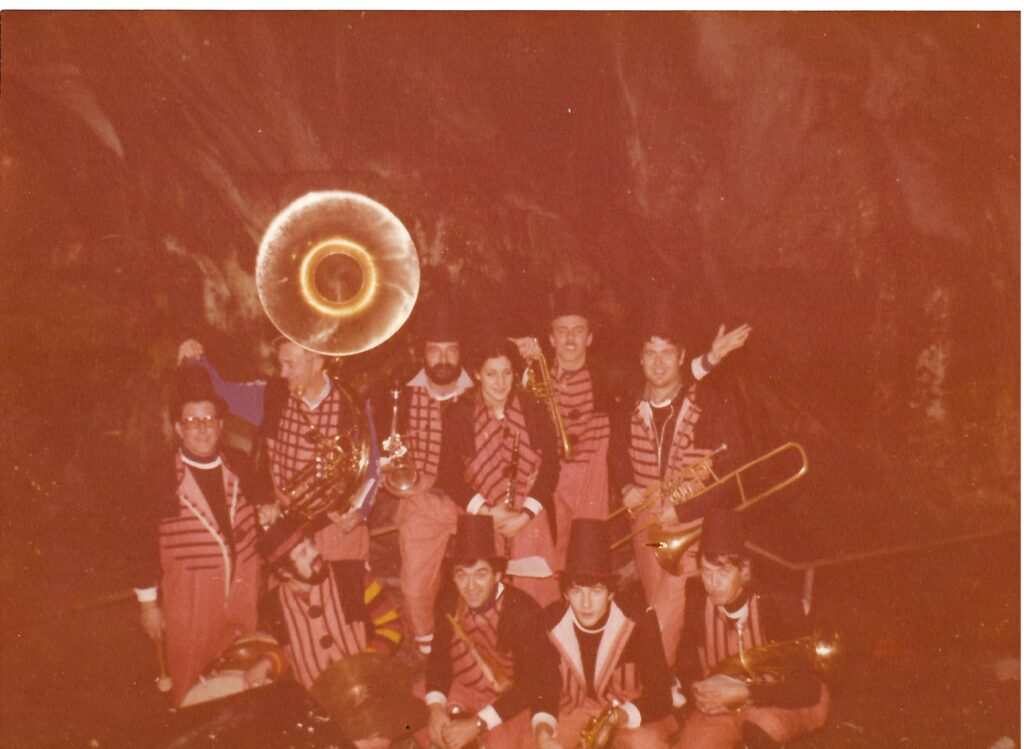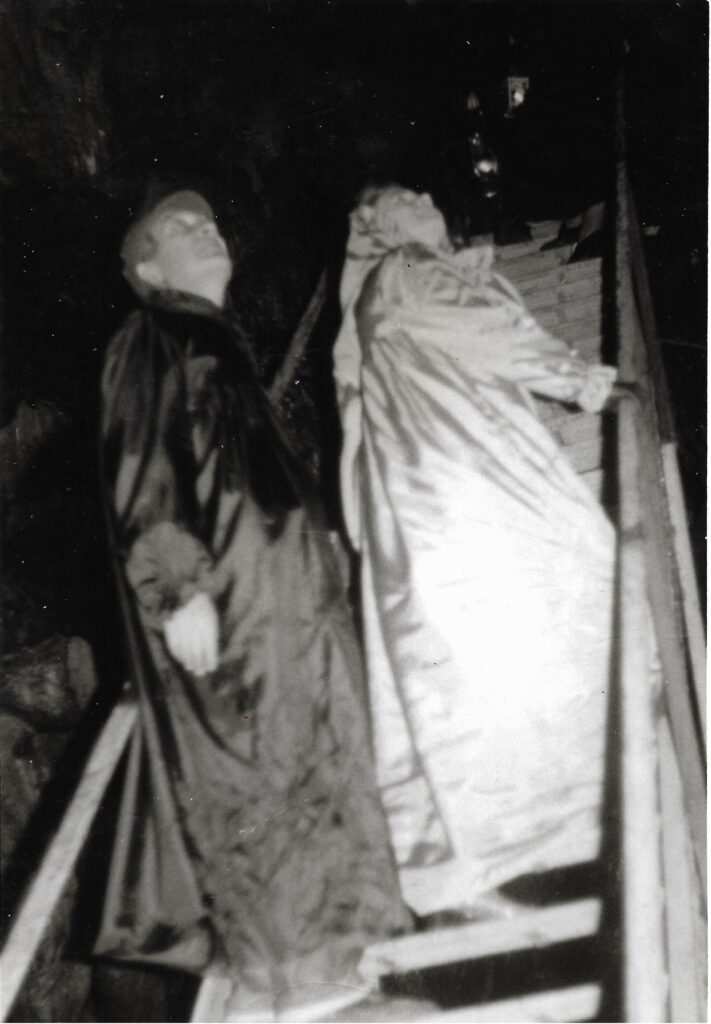The Lantern Carnival was an annual dance ball which took place in Cavtat as early as the 1930s, reaching its peak in the 1960s and 1970s. It took place in the former Falconry Centre (today’s Culture House Cavtat) on the last Thursday before Lent, better known as Pretili četvrtak (`Fat Thursday’), which would mark the beginning of the Carnival finale in Cavtat. The Lantern Carnival was certainly one of the more unique carnival events in the town’s rich carnival tradition.
The carnival’s authenticity lies primarily in its connection with the striking and unique Cavtat carnival costume, the dominal. The celebration itself was intended as the finale of a larger event which involved an evening stroll through the streets of Cavtat for those masqueraded as Dominals. The dominal or domino is the most important Cavtat traditional costume. It is a wide, originally black trapezoidal robe with a long black hood topped with two or three multicoloured ribbons, which was worn in combination with a carnival mask. These costumes were made by seamstresses; a smooth, shiny and soft cotton fabric was originally used, only to be later replaced by black satin. The finished costumes were subsequently decorated with the ribbons.
This extremely practical costume, which had been made in other colours as well since the 1970s, was a must-have for every Cavtat family. It enabled the complete concealment of one’s identity, one of the primary features of folk carnivals. This aspect of the carnival in question was especially popular with women, who traditionally rarely participated in such events. Only the colourful ribbons on the hood could reveal the identity of a Dominal, which is why participants would change the ribbons every year in order to avoid the disclosure of their identities.
The night stroll of the Dominals through the streets of Cavtat would take place before the Lantern Carnival dance party itself; it would begin with the gathering of the Dominals in front of the Culture House Cavtat. The Dominals would meet in groups and then dress in the costumes at the houses of certain participants; at dusk, all groups would rush towards the starting point of the stroll. The formed procession would move along the Placa and Prijeko streets, where the Dominals would visit houses and tease the locals, who would in turn gladly welcome them on their doorsteps and customarily treat them to food and drinks. The procession was accompanied by live music, initially performed by an accordion player and later by the Cavtat Brass Band, whose members were also recognizable by their custom tailored black and orange suits with top hats.
In addition to the music, the noise produced by the Dominals using wooden ratchets, whistles, bells and other similar props was indispensable. Another essential prop of the Dominals was a small lantern used for lighting the path during the evening stroll. Since the Second World War, the well-known Šipun cave has been included as an important stop for the Dominals, where people would `dance a little, listen to live music and, finally, eat “šporki makaruli”‘. Namely, the custom of treating the Dominals to the traditional dish makarulata (diced meat boiled in sauce and served with pasta), popularly known as šporki makaruli, developed in parallel to the organization of Pretili četvrtak over time.
Dance, song, laughter and fun continuing well into the night at the next and final stop of the stroll, the Lantern Carnival at the Culture House Cavtat, echoed in the bowels of the cave without fear of the terrible dragon Boas. Namely, the legend of St Hilarion and the dragon Boas is closely associated with the Šipun cave, while the connection between the Dominals and the dragon can be found in the design of the dominal costume: `The dominal costumes were black with long large hoods meant to resemble a dragon. It turned out that it [the Dominals tradition] was related to the Šipun cave, because Boas once dwelled in the cave and the idea behind the costume was for the wearer to resemble a dragon.‘
In addition to the above-presented interpretation of its meaning, the dominal costume, as a mask behind which class, gender and other differences are erased, is deeply woven into the identity of Cavtat. Moreover, the simplicity of the costume and its ability to blend in with the nocturnal darkness of the Cavtat streets adds a mystical and almost supernatural quality to the traditional evening stroll of the Dominals on the night of the Lantern Carnival.



